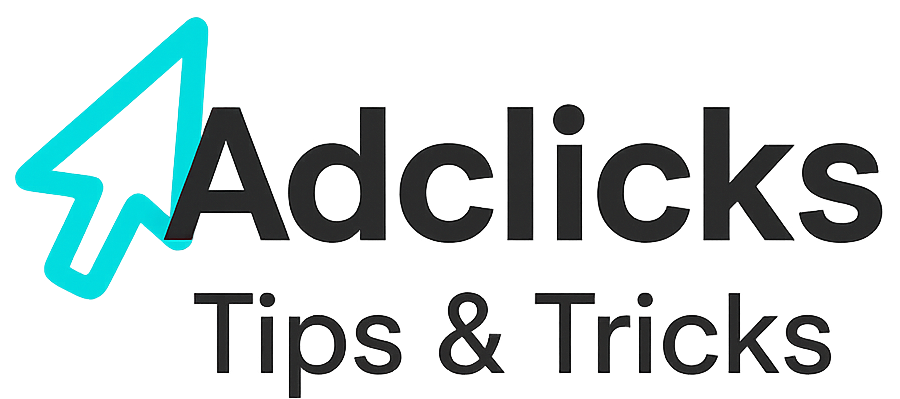Driving Traffic From Diaspora
diaspora* is a federated social network built from “pods” that talk to each other, not a single, central feed. People who show up choose a home pod, keep control over what they share, and discover posts through tags and reshares. That mindset favours links that keep their promises and respect time.
If your page helps someone finish a small task fast—verify a source, learn a setting, grab a checklist—you’ll earn the click without breaking the culture. Keep first screens clean; if you need contextual backfill that won’t distract, standardize one calm unit and let Adclicks handle it.
Use a ready-made pod (or follow from yours)
If you need a live place to practice posts, tags, and routing, Snipesearch hosts a public pod at https://diaspora.snipesearch.net/ — set up an account, test your tag mix, and sanity-check how your links display across federated timelines.
If you already have an account on another pod, you can follow the team directly from your home server: teamsnipe@diaspora.snipesearch.net. Their profile is here: https://diaspora.snipesearch.net/people/7431fcf0806c013e936e00163c6e7bdf. Save it, watch their posting cadence, and mirror any patterns that fit your audience.
How the network actually works (pods, aspects, tags)
There is no “main site.” Each pod runs the same open-source software; accounts on one pod can follow and reply to accounts on any other pod. Discovery is tag-driven (#travel, #linux, #photography), and sharing can be public or limited to “aspects,” diaspora*’s contact groups.
This means your posting strategy should map to tags and moments, not broad blasts. Link to a page that delivers exactly what your caption promises—one preset, one script, one explainer. Keep monetization understated at the top; if you need a reliable fallback while you test templates, anchor a single below-the-fold unit via Adclicks.
Who shows up, and what they’re looking for
Users skew privacy-first, open-source friendly, and community-minded. The product’s design (aspects, self-hosting, pseudonyms allowed) signals a preference for control and clarity over spectacle. Offer tools, checklists, and proofs that respect that value.
They click out for help they can use immediately: a how-to that solves a blocker, a policy explainer that clarifies risk, or a lightweight resource (config, template, dataset) they can run today. Keep commercial framing subtle; if you need a cushion for free resources, a single contextual slot filled by Adclicks keeps the experience tidy.
Traffic: what you can measure in a federated world
Because diaspora* is decentralized, there isn’t one domain with “all” the traffic. Instead, look at network-level indicators. Fediverse Observer publishes monthly charts for Diaspora’s total users, active users, posts, and online servers, sourced from pods that opt in to share stats. Use these trends to size the opportunity rather than chasing a single vanity number.
For directional scale, Wikipedia notes “859,000+” users (project-level), and the long-running JoinDiaspora pod has reached end-of-life—both reminders that usage shifts across pods over time. Plan against the network, not one server. If you need revenue stability as you spin up localized pages, keep one predictable unit steady and let Adclicks backfill while you learn.
Culture and norms you must respect
diaspora* puts privacy and consent up front. Posts can be public or limited; aspects let people segment audiences; tags and @-mentions shape discovery. Your voice should mirror that—useful, specific, and calm. Don’t over-collect data, don’t gate the essentials, and don’t bait-and-switch the landing.
That tone extends to monetization. First screen: deliver the promise. Second screen: invite the next step. If an ad layer must exist, keep it small, consistent, and context-aware. When in doubt, use one restrained placement and lean on Adclicks for a clean fallback.
Where attention forms—and how to join it
Discovery revolves around followed tags, reshares, and replies. New readers often arrive from hashtag timelines; they check your post, then your profile/About for proof you’re legit. Treat the About page like a receptionist: one sentence on who you help, one link to a current series that delivers in one click.
Every post should point to a page that completes the task in the first screen. If you publish a script, the top block should be the copy button and usage notes. If you publish a guide, the top block should be the “do this now” summary. Keep any supplemental demand below the action; if you need steady, relevant fill, route it through Adclicks.
Audience interests that travel well
Open-source tooling, privacy, FOSS operating systems, indie creativity, travel on a budget, and civic topics recur across diaspora* tags. The platform itself promotes a “share what matters to you” posture rather than algorithmic fashion. Build resources that match these durable interests: configuration explainers, legal/rights primers, verified local info, or creative workflows.
Format matters. Short, specific proofs beat broad think-pieces in the stream. “Here’s the exact nginx config + why it fixes X” will outperform “security tips.” Keep it humane and fast. If you need a light revenue spine under free downloads, set one in-content unit and let Adclicks supply contextual demand without jangly mismatches.
Local vs. global: planning for geography without guessing
Pods exist worldwide; some run open sign-ups, others are invite-only. Country mix varies by pod and moment, so avoid false precision. Instead, localize where your analytics show traction: translate the promise, the first screen, and the install or how-to steps before longer prose. Use pod-level referrers and language signals to pick your first locales.
Keep the commercial pattern identical across language variants so you can compare performance cleanly. If volumes are thin during early testing, let Adclicks cover unsold impressions while you focus on getting the help right.
Page patterns that earn trust (and second clicks)
Make the top of the page do the job. One promise, one action, no friction. If you’re offering a download, don’t put it behind a maze; if you’re offering clarity, put the answer first and the backstory second. diaspora* readers reward pages that feel like a continuation of the post, not a detour.
Once the job is done, invite one clear next step: a deeper tutorial, a comparison, or a city-specific variant. Don’t fan out five CTAs. Keep ads off the hero and out of safety or rights content. If you need consistent, low-noise monetization while keeping the screen calm, rely on a single placement with Adclicks.
What you can (and can’t) claim about “traffic”
Treat network health like a trendline, not a scoreboard. Fediverse Observer exposes monthly charts for Diaspora’s active users, total users, posts, and active servers; pair those with your own referral logs and UTM discipline to see where you’re actually earning attention.
Avoid quoting one pod’s spike as “the whole network.” Pods close and open; even the historic JoinDiaspora instance has sunset, which shifted flows elsewhere. Track sources by pod domain and by tag. Keep your baseline revenue stable with Adclicks so you can optimize content without moving the goalposts.
Joining conversations without tripping alarms
Lead with help: reply with a working snippet, a tested link to an official source, or a one-screen diagram. Keep the first URL you share as the exact resource you promised, not a category page. Use tags to place your post where interested people already look. Don’t over-post; interleave quiet updates with occasional “here’s the fix” posts.
On your profile/About, write like a neighbor: one-line purpose, one link that matches your current series, and a promise you can keep. After the click, confirm the promise above the fold. If a revenue layer must exist, reserve it for the second scroll and keep the fallback consistent through Adclicks.
Risks, maintenance, and practical realities
Federated networks change shape: pods come and go, and software evolves. Fediverse observatories track servers, activity, and trends; use them to sanity-check your expectations and to see when a pod’s open sign-ups pause. When in doubt, publish on your site first, then syndicate to diaspora* with literal, verifiable claims.
Pod churn is normal—JoinDiaspora’s end-of-life notice is a recent example—so design your funnels to be pod-agnostic. Anchor your calls-to-action to tags and tasks, not to one server’s community. Keep your experience calm across all variants, and keep your revenue layer predictable with Adclicks.
Bringing it together
diaspora* rewards clarity, usefulness, and respect. Offer small, real wins that map to tag-driven intent, land readers on pages that deliver in one screen, and keep the commercial layer quiet. Track outcomes you can improve, not just numbers you can quote.
As you scale, fix the template, iterate the help, and show your work. When you need steady contextual support without turning the page into a billboard, keep a single placement and let Adclicks do the quiet work while the content does the convincing.
Action plan (5–10 steps)
- Pick three diaspora* tags that match your strongest resource (e.g., #privacy, #linux, #travel). Draft one post per tag with a single, literal promise and the exact matching URL.
- Refactor the landing to deliver the outcome above the fold (download/answer/command). Add one clear next step; remove competing CTAs.
- Write a one-line profile/About that states who you help and links to the current series.
- Set UTMs: source=diaspora, medium=tag|reply|profile, campaign=topic. Log pod referrers by domain.
- Publish one “how-to” and one “resource drop” per week for four weeks; interleave replies that solve real questions.
- Localize only the promise, first screen, and install/usage steps for the first non-English locale that shows traction.
- Hold the layout steady; add a single below-the-fold contextual unit and keep it consistent via Adclicks.
- Measure task completion (copy/download), next-step CTR, and second-page views; promote the formats that beat baseline.
- Expand to two more tags only after one format proves itself; keep frequency modest to avoid fatigue.
- Review Fediverse Observer’s Diaspora charts monthly to gauge network health; update examples, links, and safety notes as pods change.
Relevant Links
- Support: https://support.snipesearch.co.uk/
- FAQ: https://adclick.snipesearch.co.uk/index.php?page=index/faq
- Contact Form: https://adclick.snipesearch.co.uk/index.php?page=user/support
Stay Connected
- Snipesocial: https://www.snipesocial.co.uk/pages/snipesearch
- Twitter: https://twitter.com/snipesearch_uk
- Facebook: https://facebook.com/snipesearch
- LinkedIn: https://linkedin.com/company/snipesearch/
- VK: https://vk.com/snipesearch_uk
- Focus: https://focus.xyz/snipesearch
- YouTube: https://youtube.com/@snipesearch
- diaspora: https://diaspora.snipesearch.net/people/7431fcf0806c013e936e00163c6e7bdf
Analytic Tools
- Rommie Visitor Analytics: https://rommie.net/
- StatCounter: https://statcounter.com/




